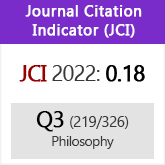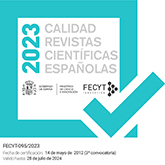Historical description and philosophical aesthetics. Social art history between the reclaiming of facts and the anachronism of suffering
DOI:
https://doi.org/10.3989/isegoria.2015.052.14Keywords:
Art historiography, philosophical aesthetics, Francis Haskell, Michael Baxandall, TJ. Clark, Georges Didi-Huberman, suffering, anachronismAbstract
The aim of the present paper is to describe the ethos, which is to mean, the habitus and the home of the art historian, from the starting point of the elements that form the backbone of Social Art History: the reclaiming of facts, the consideration of the works of art as the deposit of social interaction, and the aim of remaining inside the terms of the historically describable. In differentiating itself from the specific preoccupations of philosophical aesthetics and from the reclaiming of the anachronic pathos of the recent programs of anthropology of images, such historiography, which during the generation of Haskell and Baxandall was generally skeptical about theory, later with the arrival of the New Art History, postulated itself less as a method than as the terrain in which every question and every concept imported from philosophy would be launched.
Downloads
References
Alpers, Svetlana, «Is Art History?», Daedalus, Vol. I, Summer 1977, pp. 1-14
Althusser, Louis, Philosophie et philosophie spontanée des savants. Maspero, Paris, 1974, pp.103-104
Bann, Stephen, «The Road to Rosommon», Oxford Art Journal, Vol.17, Nº1, 1994, pp. 98-102 http://dx.doi.org/10.1093/oxartj/17.1.98
Baxandall, Michael, Painting & experience in Fifteenth-Century Italy., Oxford UP, 1972
Belting, Hans, Das Ende der Kunstgeschichte? Deutscher Kunstverlag, Munich, 1983
Borzello, Francis, The New Art History, Camden Press, London, 1986
Bryson, Norman, Vision and Painting: The Logic of the Gaze. Yale University Press, 1983 PMCid:PMC1427943
Cabello, Gabriel, «Malestar en la historia del artes. Sobre la antropología de las Imágenes de Hans Belting y Georges Didi- Huberman», Imago crítica, nº. 2, 2010, pp. 29-52.
Bourdieu, Pierre; Darbel, Alain, L'amour de l'art. Minuit, Paris, 1969
Clark, T.J., "The Conditions of Artistic Creation" Times Literary Supplement, May 24, 1974, pp. 561-62
Clark, T.J., Imagen del pueblo. Gustave Courbet y la revolución de 1848. Gustavo Gili, Barcelona, 1981
Clark, T.J., The painting of modern life. Paris in the art of Manet and his followers. Thames & Hudson, London, 1984
Clark, T.J., Techniques of the Observer: On Vision and Modernity in the Nineteenth Century. MIT, Cambridge, 1990
Compagnon, Antonine, «Le mauvais oeil de l'historian». Critique, 589-90, juin-juillet 1996, pp. 476-496
Crow, Thomas, The intelligence of art. The University of North Carolina Press, 1999 Danto, Arthur C., After the end of art. Contemporary Art and the pale of history. N.Jersey, Princeton UP, 1997
Derrida, Jacques, La vérité en peinture. Flammarion, Paris, 1978
Didi-Huberman, Georges, Devant l'image. Questions posées aux fins d'une histoire de l'art.Minuit, Paris, 1990
Didi-Huberman, Georges, Devant le temps Histoire de l'art et anachronisme des Images. Minuit, Paris, 2000
Foucault, M. «Qu'est-ce que un philosophe?» Dits et écrits I. 1954-1975. Paris, Gallimard, 2001
Fried, Michael, Absortion and Theatricality. Painting and Beholder in the age of Diderot. University of California Press, 1980
Fried, Michael, Manet's modernism or, The face of Painting in the 1860. The University of Chicago Press, 1996
Habermas, J., «La filosofía como comodín e intérprete». Habermas, J., Conciencia moral y acción comunicativa. Trotta, Madrid, 2008
Hadjinicolau, Nicos, Historia del arte y lucha de clases. Madrid, Siglo XXI, 1976
Harris, Jonathan, The New Art History: A Critical Introduction. Routledge, London, 2001 http://dx.doi.org/10.4324/9780203466780
Haskell, Francis, Rediscoveries in art. Phaidon, Londres, 1976
Haskell, Francis, La historia y sus imágenes. Madrid: Alianza, 1994, p.220
Haskell, Francis, Patronos y pintores. Arte y sociedad en la Italia barroca. Madrid, Cátedra, 1984
Holly, M.A., Panofsky and the foundations of art history. Cornell UP, New York, 1984
Jöekalda, Kristina, 'What has become of the New Art History?' Journal of Art Historiography, nº 9, 2013, pp.1-7
Krauss, R.E., The optical uconscious. Cambridge, MIT Press, 1993, p.35
Mallarmé, Stéphane, «The Impressionists and Édouard Manet». The Art Monthly Review, 1876. Reproducido en Florence, P., Mallarme, Manet, Redon. Cambridge UP, 1986, pp.11-18
Moxey, K., «Semiotics and the Social History of Art». New Literary History, 1991, 22, pp. 985-999 http://dx.doi.org/10.2307/469075
Passeron, Jean-Claude, Le raisonnement sociologique. Paris, Albin Michel, 2006
Penny, Nicholas, «Francis Haskell (1928-2000)», The Burlington Magazine, Vol. 142, No. 1166 (May, 2000), pp. 307-308
Preziosi, Donald, Rethinking Art History. Meditations on a Coy Science. New Haven, Yale UP, 1989
Preziosi, Donald, The Art of Art History. A critical Anthology. Oxford UP, 2009 PMCid:PMC2708411
Schmitt, Jean-Claude, Le corps des images. Gallimard, Paris, 2002 http://dx.doi.org/10.14375/np.9782070761593
Shiner, L, The Invention of Art. A Cultural History. Chicago UP, 2001.
Downloads
Published
How to Cite
Issue
Section
License
Copyright (c) 2015 Consejo Superior de Investigaciones Científicas (CSIC)

This work is licensed under a Creative Commons Attribution 4.0 International License.
© CSIC. Manuscripts published in both the printed and online versions of this Journal are the property of Consejo Superior de Investigaciones Científicas, and quoting this source is a requirement for any partial or full reproduction.All contents of this electronic edition, except where otherwise noted, are distributed under a “Creative Commons Attribution 4.0 International” (CC BY 4.0) License. You may read here the basic information and the legal text of the license. The indication of the CC BY 4.0 License must be expressly stated in this way when necessary.
Self-archiving in repositories, personal webpages or similar, of any version other than the published by the Editor, is not allowed.














